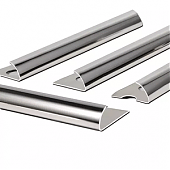The influence of nickel on stainless steel

Stainless steel is a metal material with excellent corrosion resistance and is widely used in various industrial fields. Among them, the combination of two elements, nickel and molybdenum, plays an important role in the performance of stainless steel. This article will analyze in detail the influence of nickel on stainless steel and the strengthening effect of molybdenum.
First of all, nickel occupies an important position in stainless steel. It is an element that forms and stabilizes ferrite and can help improve the corrosion resistance of stainless steel in reducing media. At the same time, nickel can also improve the resistance of stainless steel to pitting corrosion and crevice corrosion. In chromium-nickel austenitic stainless steel, the addition of nickel can further expand the scope of use, especially in environments that require stainlessness and oxidation resistance, the role of nickel is more significant.
However, as the nickel content in the steel increases, the structure of austenitic stainless steel will change. For example, when steel contains a higher amount of nickel, intermetallic phases such as σ phase, κ phase and Laves phase are easily produced in austenitic stainless steel. The precipitation of these phases will be detrimental to the corrosion resistance and mechanical properties of the steel. influence, leading to a decrease in plasticity and toughness. Therefore, during production, equipment manufacturing and application, care should be taken to prevent the formation of intermetallic phases in steel.
Overall, nickel plays a vital role in stainless steel. It improves the corrosion resistance and pitting corrosion resistance of stainless steel by affecting the stability of the organization and optimizing its performance. In practical applications, we can choose stainless steel with the appropriate combination of alloy elements according to different use environments and media to achieve the best use results. At the same time, corresponding preventive and solution measures are also required for problems that may be encountered during production and application, such as the formation of intermetallic phases and the reduction of thermal processing performance.
Related Products

Factory Introduction
Choose the right stainless steel material according to your needs
316N Stainless Steel
Contact Us